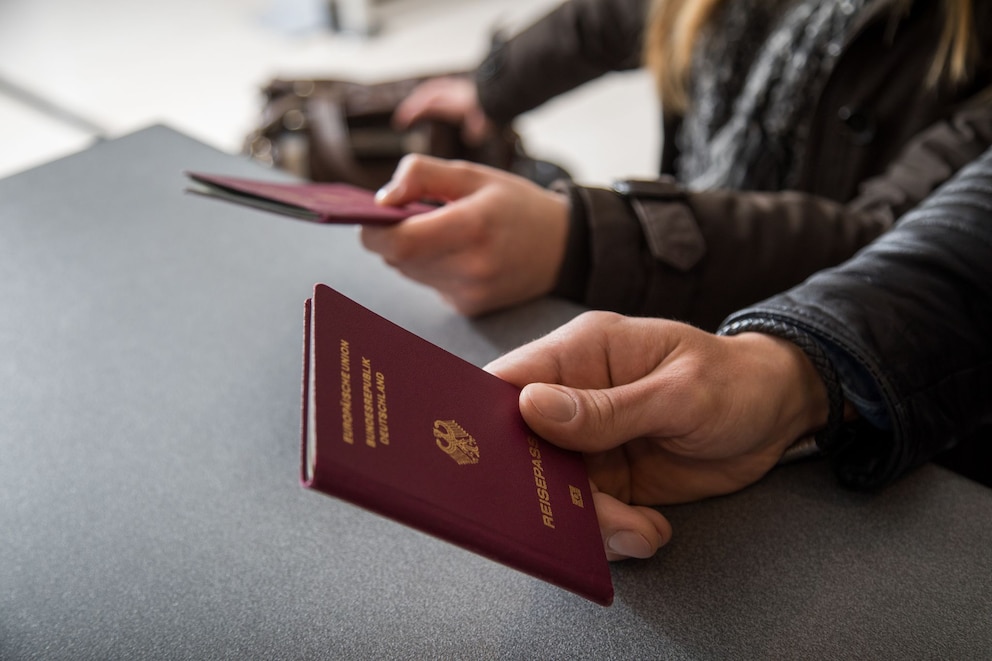June 7, 2025, 5:15 am | Read time: 5 minutes
Long waits at check-in, panic over forgotten documents, or stress at security checkpoints–for many, vacation starts with chaos at the airport. However, many pitfalls can be easily avoided. Those who take care of a few important things in advance travel much more relaxed.
From ID checks to baggage requirements: Being well-prepared before a flight saves time, nerves, and avoids extra costs. A checklist of the most important points for a smooth flight.
Overview
The Checklist for Your Flight
1. Check Travel Documents in Time
Is Your ID Still Valid?
An expired ID can become a real stress factor—especially if the trip is imminent. Therefore, you should check weeks in advance whether your ID card or passport is still valid. Applying for new documents can take time. If you only realize at the airport that your ID has expired, you may still have the option to obtain a travel document as a passport substitute from the federal police.
However, the authority warns online: Traveling with these papers is at your own risk, as “other countries are not obliged to recognize the documents.” In extreme cases, this can mean that a destination country denies entry—or even the airline refuses transport.
Even within the Schengen Area in Europe, a valid ID must be presented upon request. While some countries, such as Spain, allow entry with an ID that has expired for up to a year, it’s better not to rely on this. According to the website of Berlin’s BER airport, “airlines can apply stricter regulations regarding documents than the travel country.”
Express Passport as a Last Resort
If the timeframe is too tight for a regular application, an express passport can be a solution. However, it is more expensive. For particularly urgent cases, a temporary passport is possible, as the Federal Ministry of the Interior states. However, proof such as flight tickets must be presented.
Do I Need a Visa?
Anyone traveling outside the EU should find out before booking which documents are required, how long they must be valid, and whether a visa or entry permit is also necessary.

Also interesting: Only with this passport can you travel to all countries in the world
2. Online Check-in Saves Time and Money
For many airlines, online check-in via app or website is now standard. This not only saves time but also money—especially with low-cost airlines like Ryanair or Wizz Air, where check-in at the counter incurs additional costs.
In addition, many airports have self-check-in kiosks: Here, an ID scan is enough to print the boarding pass. Those who have already checked in can proceed directly to the security check.
Technology is also worthwhile for baggage drop-off: Automated bag-drop stations allow you to check in luggage yourself. You scan the boarding pass, print a baggage label, attach it to the suitcase, and place it on the conveyor belt. Hamburg Airport informs that this is sometimes possible directly at the check-in kiosks.
3. Pay Attention to Baggage Rules
Observe Baggage Dimensions
Carry-on luggage is not the same everywhere—the requirements for size and weight can vary significantly. While some airlines allow dimensions of 55 × 40 × 23 centimeters, others only permit 40 × 30 × 10 centimeters. Strict rules also apply to checked baggage regarding size and weight. Exceeding these can result in expensive surcharges.
Label Checked Baggage
A few tips from Munich Airport for checked baggage:
- Attach your name, contact details, and address to the luggage
- If you have multiple travel stops, include a note with the travel itinerary inside
- Consider placing a tracker inside (such as an Airtag)
- Take a photo of the suitcase
Pack Carry-on Smartly
In case of emergencies, carry-on luggage should contain important items. “I would never put medications I rely on in checked baggage,” says Laura Frommberg from the specialist portal “Aerotelegraph.com.” She also always has cosmetics and a change of clothes “for emergencies” in the cabin.
Check Rules for Prohibited Items
It is also important to inform yourself in advance about prohibited items. Power banks, for example, do not belong in checked baggage—and even in carry-on luggage, strict regulations apply.

Why you shouldn’t hang any accessories on your suitcase

How to guarantee a successful trip with children

Airports in Thailand introduce facial recognition
4. Tips for Security Check
Check Waiting Times in Advance
Especially during holiday periods, long lines often form at security checks. Those who do not adjust to the current conditions in time risk missing their flight. The websites and apps of airports often show current waiting times and provide forecasts for the coming days.
In some cases, you can even book a time slot for the security check in advance. “This saves a lot of time,” says frequent flyer Frommberg—and she regularly uses such offers.
Pack Smartly
Her additional advice for a smooth process: “Pack items like a laptop or liquids bag so that you can quickly grab them from the carry-on.” Even though more and more airports are using modern CT scanners, these items still need to be placed separately in the tray in many places. Taking too long to find them not only delays your own check but also that of fellow travelers.
With material from dpa

